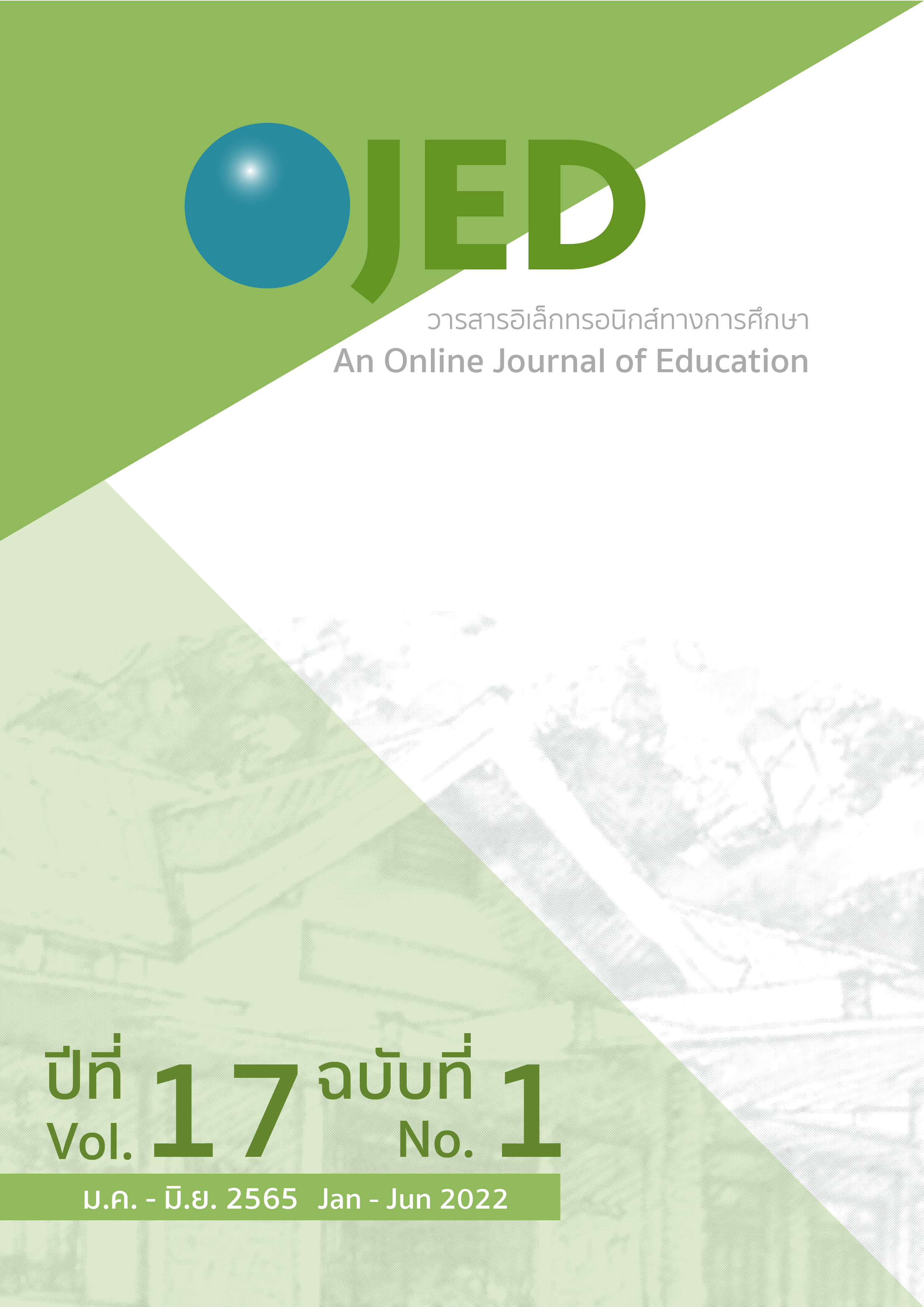Reading while Listening to Enhance Thai EFL Students’ Reading Abilities
DOI:
https://doi.org/10.14456/ojed.2022.7Keywords:
reading while listening, reading, reading abilitiesAbstract
This mixed-methods study aimed to investigate the effects of Reading While Listening intervention on 113 Thai EFL students’ reading abilities and to explore their perceptions towards the intervention. Quantitative data were collected through the English Reading Ability Test before and after the intervention as well as completing the Perceptions of Reading While Listening Questionnaire after the intervention. Qualitative data were obtained through semi-structured interviews. Results from the Paired Sample T-test revealed that students significantly improved their English reading ability after participating in the intervention for eight weeks. They reported positively upon four aspects on the basis of (1) motivation, (2) learning engagement, (3) amount of learning and (4) graded readers evaluation. Implications for teaching reading while listening are offered to support English reading instruction.
References
Al Dahhan, N. Z., Kirby, J. R., & Munoz, D. P. (2016). Understanding reading and reading difficulties through naming speed tasks. AERA Open, 2(4), 233285841667534. https://doi.org/10.1177/2332858416675346
Chang, A. C.-S. (2016). The effect of reading while listening to audiobooks: listening fluency and vocabulary gain. Asian Journal of English Language Teaching, 21, 43–64. https://www.dyslexicadvantage.org/wp-content/uploads/2016/10/Reading-While-Listening.pdf
Chang, A. C. S., & Millett, S. (2015). Improving reading rates and comprehension through audio-assisted extensive reading for beginner learners. System, 52, 91–102. https://doi.org/10.1016/j.system.2015.05.003
Grabe, W. (2017). Handbook of research in second language teaching and learning. In E. Hinkel (Ed.), L2 reading comprehension and development (Vol. 3, pp. 299–309). Routledge.
Grabe, W., & Stoller, F. L. (2019). Teaching and researching reading (applied linguistics in action) (3rd ed.). Routledge. https://doi.org/10.4324/9781315726274
Granena, G., Muñoz, C., & Tragant, E. (2015). L1 reading factors in extensive L2 reading-while-listening instruction. System, 55, 86–99. https://doi.org/10.1016/j.system.2015.09.005
Larson, L. C. (2015). E-books and audiobooks. The Reading Teacher, 69(2), 169–177. https://doi.org/10.1002/trtr.1371
National Institute of Educational Testing Service. (n.d.). Report score page of O-NET/GAT-PAT/ AMS. National Institute of Educational Testing Service Website. from https://www.niets.or.th/th/
PISA. (2018). PISA 2018 results (Volume I). https://doi.org/10.1787/5f07c754-en
Renandya, W. A. (2016). Extensive reading and listening in the L2 classroom. In H. P. Widodo & G. M. Jacobs (Eds.), English language teaching today: Linking theory and practice (1st ed., pp. 97–110). Springer.
Renandya, W. A., & Widodo, H. P. (2018). English language teaching today: Linking theory and practice (English language education, 5). Springer.
Serrano, R., & Pellicer-Sánchez, A. (2019). Young L2 learners’ online processing of information in a graded reader during reading-only and reading-while-listening conditions: A study of eye-movements. Applied Linguistics Review. https://doi.org/10.1515/applirev-2018-0102
Tragant, E., Muñoz, C., & Spada, N. (2016). Maximizing young learners’ input: An intervention program. The Canadian Modern Language Review, 72(2), 234–257. https://doi.org/10.3138/cmlr.2942
Tragant, E., & Vallbona, A. (2018). Reading while listening to learn: Young EFL learners’ perceptions. ELT Journal, 72(4), 395–404. https://doi.org/10.1093/elt/ccy009
Webb, S., & Chang, A. C. S. (2014). Second language vocabulary learning through extensive reading with audio support: How do frequency and distribution of occurrence affect learning?. Language Teaching Research, 19(6), 667–686. https://doi.org/10.1177/1362168814559800
Downloads
Published
How to Cite
Issue
Section
License
Copyright (c) 2022 An Online Journal of Education

This work is licensed under a Creative Commons Attribution-NonCommercial-NoDerivatives 4.0 International License.




